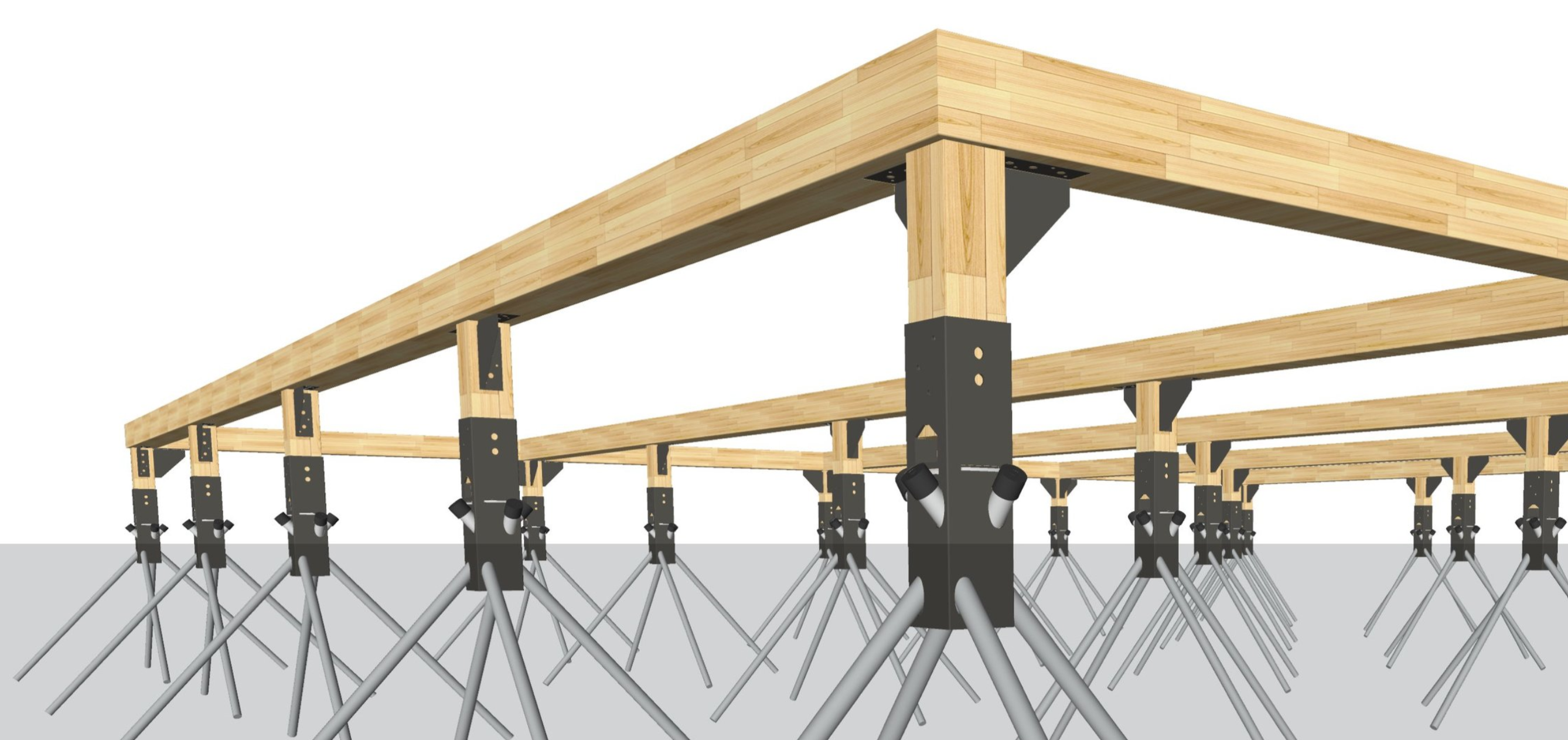A Tidbit on Pin Foundations
Dear Readers,
The purpose of this blog is to share some of my own understandings and primary research on pin foundations. The information is useful for a foundational knowledge of how to build a house.1
What is the purpose of a foundation?
The three most important functions of a foundation are to be load bearing, act as an anchor, and isolate the home from ground moisture.
Load Bearing: Through the foundation, the weight of the home is transferred from the structure to the ground. The foundation must be able to bear ‘dead’ and ‘live’ loads. ‘Dead’ load is the constant weight of the home structure itself, it never changes. ‘Live’ load varies according to the amount of people, things, or snow in or on the house at any given time.
Anchor: A foundation should act as an anchor for the home against natural forces. A house bolted, or connected, to its foundation is less likely to be swept away by tornadoes or floods, or destroyed by earthquakes.
Isolate: The foundation should isolate the home from ground moisture. Wood, a common building element, rots faster when it is in direct contact with the earth. So, it is necessary to have a separation between the ground and the wood structure.2
Why do William and I want to use a pin foundation?
One of the main reasons we wish to use a pin foundation is to lower our home’s environmental impact. Concrete, a typical building material for foundations, has a high output of CO2 and a high consumption of fossil fuels in its manufacturing, transportation, and construction.3 The laying of a concrete foundation is also a time consuming, physically demanding, and environmentally disruptive process. It can contribute to soil erosion and water pollution, to name a few of the concerns.
A pin foundation is less time consuming to install, less physically demanding, and is much more friendly to the environment. One pin foundation producer, Foundation Frame, acts on the belief that “the Earth is the actual foundation, and soils, in their natural undisturbed state, have the strength and structure to do the job.”4 They use pins as a way to bear the load of the structure, to anchor the home, and to elevate the structure from the ground. The pins are driven into the earth at different angles, resembling the roots of a tree. And, unlike a traditional foundation, the pins do not impede water flows or jeopardize soil structures.
Rendering of a pin foundation framework. Photo courtesy of Pin Foundations, Inc.
While the installation of a pin foundation is itself less time consuming, the planning beforehand should be given a due amount of thought. First, the type of soil upon which the home will be built, is crucial to deciding whether a pin foundation will even work or not. If the soil is, for example, shale and mostly impenetrable, pins won’t work. Therefore, a soil test done by a geotechnical engineer and the submission of the soil report to your chosen pin foundation installer is a must-do before even thinking about using a pin foundation. Even if your soils are penetrable, that information is crucial to determining the strength (bearing uplift and lateral capacities) of the pins required.
And land is not the only thing that will determine the type of pins required…your house is important too! How big your home is, is also, literally, a huge component. Is it a tiny house? Two stories? Three? Over 2,000 square feet? Are there going to be more than twenty people inhabiting it frequently? This is your foundation…the structural load you are putting on top of it, the ‘dead’ and ‘live’ components, matter. That is why a structural engineer is required to do a preliminary calculation of the structural load and submit it to not only the pin foundation installer, but also to local building code authorities.
William and I are eager to try out a pin foundation and see first hand how simple the installation process is. If it is as simple as it seems, it will make prefabrication and installation of homes on-site that much smoother, and possibly cheaper.
Stay tuned for further tidbits and research!
Sincerely,
Shelby Aldrich
1. Ha! Did ya’ catch that? I made a funny.
2. Layton, Kit. “Purpose of a Building Foundation,” hunker.com. 17 July, 2017. https://www.hunker.com/13402461/purpose-of-a-building-foundation. Accessed on 16 March, 2020.
3. Chadwick Dearing Oliver, Nedal T. Nassar, Bruce R. Lippke & James B. McCarter (2014) “Carbon, Fossil Fuel, and Biodiversity Mitigation With Wood and Forests”, Journal of Sustainable Forestry, 33:3, 248-275, DOI: 10.1080/10549811.2013.839386. Page 261.
4. Diamond Pier Foundation System. “Installation Manual- Introduction,” 2018. https://www.diamondpiers.com/installation-manual/introduction#soils. Accessed on 18 March, 2020.
9 Comments
Submit a Comment
© 2020 Sustaining Tree
© 2020 Sustaining Tree


I am going to learn a lot from the two of you!
Hi Aunt Rose! Thank you for reading 🙂 Sharing knowledge is the goal.
It is so amazing how the pins resemble the roots of a tree. I love me some biomimicry. We have so much to learn from nature.
Your post was so interesting and informative–I love it!
Liz! Yes! Biomimicry is wonderfully intriguing. Thank you for reading!!
Veeerry interesting!
Hey Uncle Dennis! Thank you veeerryy much for reading 🙂
what material used for pins? steel? aluminum? iron? re ycled plastic?
Hi Granann! That’s a great question! The pins are made from galvanized steel, as are the bracing connectors, hex bolts, framing screws, and structural base (where the pins go through). The caps for the pins are made of rubber. Here is a link to their tech info: https://foundationframe.net/tech-info. Thank you for reading!!
thank you for sharing. I am learning from your website.